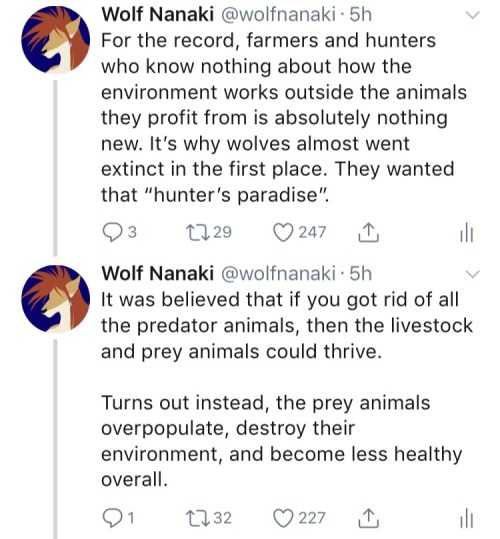Latest Posts by its-mistakeboi - Page 4

Scared of snakes? No worries… this one’s actually a lizard! Meet the slender glass lizard (Ophisaurus attenuatus). While you might spot it coiled up like a snake to intimidate foes, the resemblance is only superficial. Unlike snakes (which have ocular scales called brilles), this reptile has eyelids that can blink. Whereas snakes “hear” through vibrations, the slender glass lizard has ear holes (like humans). And while snakes can dislocate their jaw bones to swallow large prey whole, the slender glass lizard cannot. It typically dines on pint-sized prey like insects and small reptiles.
Photo: frankf, CC BY-NC 4.0, iNaturalist

The shape of a fish's caudal tail can tell you a lot about how fast the fish moves! A rounded tail is the slowest and a lunate tail is the fastest! The lunate tail has the most optimal ratio of high thrust and low draw, making it the fastest.
Ichthyology Notes 2/?
where's that "was anyone gonna tell me" meme when you need it because holy shit did the bird app just slap me in the face with this

(and yes, it's real and terrifying tbh)
special defense




does this count as anything ???is this art

the snoldering snirker...



I don't want my cellphone to have AI I want it to have 3 days of battery time. I don't want my computer to have AI preinstalled I want it to have seven usb ports and high ram at affordable price. I don't want my games to have AI built levels I want them to be so optimized I could run them on a nokia.

Golden-mantled Ground Squirrel Callospermophilus lateralis
9/25/2023 Tahoe, California

reblog in solidarity if you're drinking a beverage
in an ideal world i would have 8 beverages with me at all times and i would just be able to pull them out of my pocket like an animal crossing character
why do spiders get these very cool unique eye arrangements compared to a lot of other tiny creatures which seem to do a lot of like, big compound eyes?

spider eye arrangements
Yum, lunchtime!

rattober day 12 - fearsome rat
you messed with the wrong rat!



After nearly 20 years of trying to increase the red-headed vulture population, this endangered baby vulture was born in March at the Nakhon Ratchasima Zoo in northeast Thailand. The endangered bird is the first red-headed - also known as Asian king vulture - to be bred in the continent and only the second in the world. X
beavers have the lifestyle that most children dream of. dig and travel through underwater canals. dam a river and flood the local woodlands. stomp mud into dam to seal. swim to flooded trees and destroy them. live in a secret hideout with a underwater entrance. full ownership over an engineering project

Autumn in Northern Mongolia
Autumn arrived in a blaze of color in north-central Mongolia. The montane forests surrounding Lake Hövsgöl, the country’s largest lake by volume, took on golden hues in late September 2024, while high mountain ridges nearby sported a layer of bright white snow.
At an elevation of 1,645 meters (5,397 feet), Lake Hövsgöl (also known as Khuvsgul and Khövsgöl) sits at the foot of the eastern Sayan Mountains, near the border with Russia. Along with shrubs and grasslands, forests consisting primarily of Siberian larch (Larix sibirica) blanket the hills around the lake. Larches are deciduous conifer trees, meaning that they have cones and needles like conifers, but they change color and drop their needles in the fall like deciduous trees.
The result of this seasonal transformation was captured by the OLI (Operational Land Imager) on Landsat 8 on September 26 (above, right). For comparison, an image acquired about one month earlier by the OLI-2 on Landsat 9 (left) shows much greener vegetation.

Lake Hövsgöl, which has existed for over 2 million years, is one of the world’s ancient lakes. It measures approximately 137 kilometers (85 miles) from north to south and is an important water resource for Central Asia, holding about three-quarters of Mongolia’s freshwater. Researchers have described the lake as “near-pristine,” with minimal development in its watershed. Its waters are oligotrophic, or low in nutrients, and very clear. The only outlet from Lake Hövsgöl ultimately feeds into the much older and larger Lake Baikal, about 200 kilometers (125 miles) to the east.
Fall is a relatively short season in this part of northern Mongolia. Ice can start to form on Lake Hövsgöl as early as November and persist into June. Reaching thicknesses up to 1.5 meters (5 feet), the ice once supported truck routes across the lake. Driving on the ice has been prohibited for decades due to environmental concerns, and efforts are underway to retrieve vehicles that sank while attempting the crossing.
NASA Earth Observatory images by Wanmei Liang, using Landsat data from the U.S. Geological Survey. Story by Lindsey Doermann.


Do you ever wish you could take the steam with you?

New Jersey Miku
(Bonus) Uncharismatic Fact of the Day
If you like rats, you'll love the Gambian pouched rat, because there is a lot to love! It is the world's largest rat, weighing anywhere from 1.0 and 1.4 kg (2.2 and 3.1 lb). They are named for their equally impressive cheek pouches, which they use to hoard large quantities of food inside their burrows.

(Image: A Gambian pouched rat (Cricetomys gambianus) by Aubrey Kelley)
Want to request an uncharismatic critter? Just send me proof of donation to any of these vetted fundraisers for Palestinian refugees!

kind of perverted that microwave will spin your food for you. showing you all its angles for your freakish lustful gaze







So one of my tweets kinda blew up. :v


crunch crunch. eee yaah! eeeem. crunch. aha ah mm hmm ah. crunch. s good. yea yea yea. crunch crunch. ah aha aha




